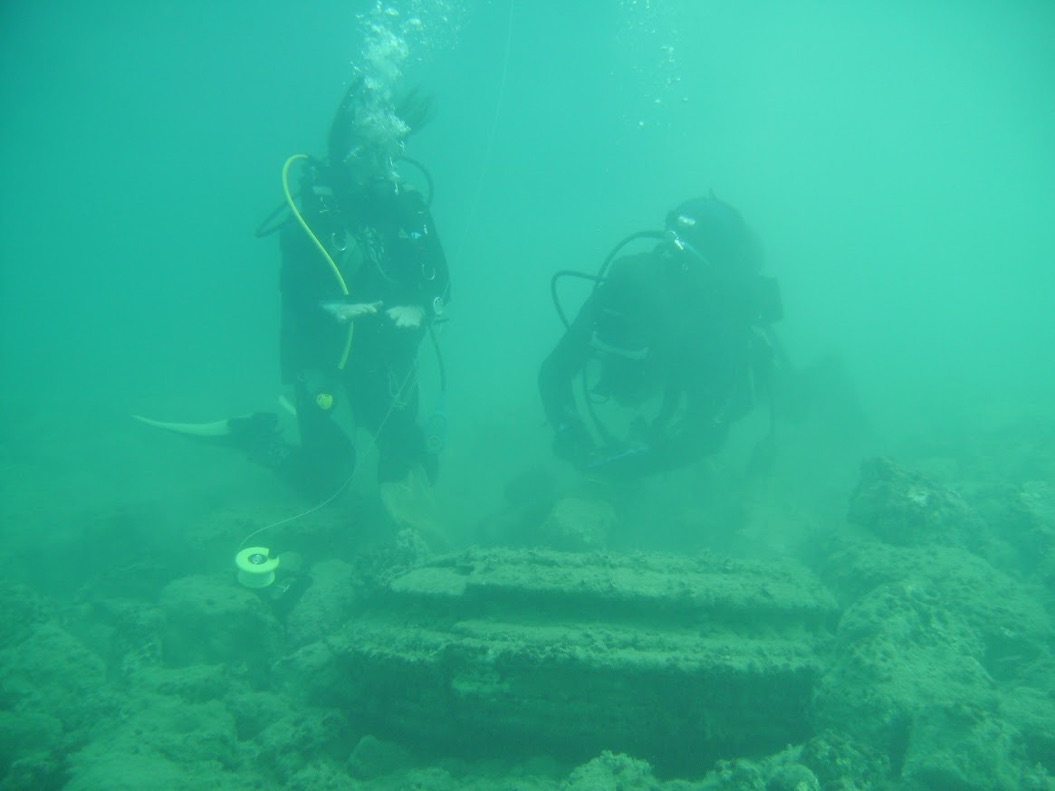Lost Underwater ‘City’ Revealed as Natural Geological Formation

What was thought to be an underwater, lost city is actually a naturally occurring geological phenomenon.
Pipe-like, disc and doughnut-shaped structures discovered by underwater divers near the island of Zakynthos, Greece, were originally believed to be ruins of an ancient city, such as remnants of paved floors, courtyards and columns.
Now researchers have found that the "ruins" are in fact geological formations, the results of a natural phenomenon that took place in the Pliocene epoch, up to 5 million years ago. [See Photos of the 'Lost City' Geological Formations]
Archaeologists with the Ephorate of Underwater Antiquities of Greece, a department within the Greek Ministry of Culture specializing in marine archaeology, examined the site; they found no further evidence that this was indeed an ancient civilization. Suspecting a geological explanation, the Greek Ministry brought in researchers from the University of East Anglia and the University of Athens to investigate the oddly shaped structures.
"The site was discovered by snorkelers and first thought to be an ancient city port, lost to the sea," lead study author Julian Andrews, a professor at UEA's School of Environmental Sciences, said in a statement.
"There were what superficially looked like circular column bases and paved floors but, mysteriously, no other signs of life — such as pottery."
Using microscopy, X-ray techniques and chemical analyses, the researchers studied the mineral content of the underwater formations. These analyses showed that the "ruins" are likely the fossilized remains of a natural plumbing system, located beneath the seafloor, for ancient hydrocarbon seeps. Here, methane and other hydrocarbons escape from the seafloor into the water above.
Get the world’s most fascinating discoveries delivered straight to your inbox.
While beneath the seafloor, microbes in the sediment would have used the carbon in methane as fuel, forming a natural cement around the structures. The resulting structures are known to geologists as concretion.
Erosion then exposed the underground structures to the bustling ecosystem in the modern, shallow subtidal zone, where the structures were "bored and encrusted by modern marine organisms," Andrews and colleagues wrote in the study, which appeared today (June 2) in the journal Marine and Petroleum Geology.
"The disk and doughnut morphology … is typical of mineralization at hydrocarbon seeps — seen both in modern seafloor and paleo settings," though such formations "looked a bit like circular column bases," Andrews said. "We found that the linear distribution of these doughnut-shaped concretions is likely the result of a subsurface fault which has not fully ruptured the surface of the seabed. The fault allowed gases, particularly methane, to escape from depth."
Though the site is not in fact an ancient, underwater city, the discovery near Zakynthos is rather uncommon geologically, Andrews said. The phenomenon is rare in shallow waters, as most similar formations can be located hundreds or thousands of meters deep underwater, he said.
Original article on Live Science.


